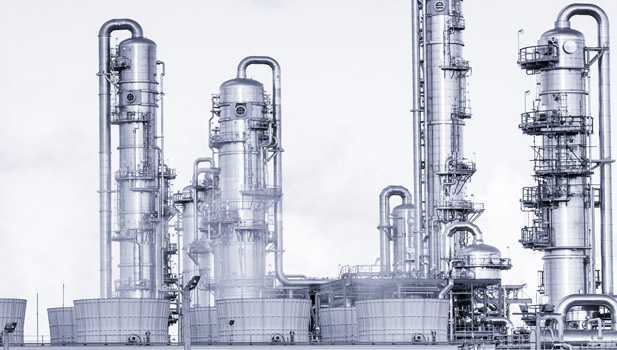Environmental Consulting
EHS Management Systems
For more than 50 years, Trinity has assisted organizations by addressing EHS compliance and performance issues. This experience, combined with the knowledge of Trinity's management system experts, ensures the successful implementation and maintenance of our clients' management systems.
Trinity Consultants supports organizations in developing management systems and preparing for certification to EHS&Q-related ISO standards. Available support includes the following:
- Performing a gap analysis between existing EHS&Q management systems and current management systems or informal EHS&Q programs
- Developing and implementing missing management system elements/processes
- Coaching clients on how to achieve real, measurable value from a management system
- Training management and employees
- Management system auditing to document conformity with the standard(s)
- Assisting with self-certification
How Else We Can Help
Related Services

Sustainability Program Support and ESG Disclosure
Trinity elevates your sustainability journey with expert ESG support, managing risks, seizing opportunities, and ensuring compliance with global standards.
PHA and Risk Assessments
Trinity Process Hazard Analysis (PHA) experts have extensive experience with hazard identification, evaluation, and mitigation services.
Auditing and Verification
Boost EHS compliance and performance with tailored Auditing & Verification solutions for regulatory compliance, management systems, and risk management.Our Results
Featured Projects

Trinity’s Technical RCRA Expertise Supports Streamlined Permitting
Our RCRA specialists help companies facing challenges with the extensive documentation and intricate details required for Part A and Part B permitting.
Trinity Brings Calm Vigilance to Packaging Giant’s Multisite Environmental Reporting Requirements
A very large packaging company in Illinois partnered with Trinity Consultants to evaluate and improve their environmental program.
A Global Chemicals Company Integrates for HSE Compliance Visibility
A long-time Trinity client engaged the air and Digital Solutions teams to support permitting and software installation needs.
Power Company Partners with Trinity to Modernize Compliance using Enablon Platform
Starting in 2017, a leading international power generating company tasked Trinity Consultants’ Digital Solutions team with spearheading an Environment, Health, and Safety (EHS) compliance management system modernization program.Regulatory Background
Management Systems Overview
What is a Management System?
A management system is a set of systematic processes and practices that enable an organization to effectively manage its interactions with the environment, occupational health and safety, and/or its customers. A management system that is well-conceived and implemented can provide many benefits to an organization, including:
- Enhancing compliance with regulatory requirements
- Managing risks and opportunities
- Improving confidence among stakeholders
- Improving corporate image
- Meeting customer demands
Achieving competitive advantages (reduced energy usage and raw material consumption, improved environmental stewardship, decreased production losses, reduced accidents, and incidents, etc.)
There are several recognized standards that an organization can use as a model when developing a management system. All of these standards have been updated in recent years and follow the “Plan-Do-Check-Act Model.”
- ISO 14001 Environmental Management System (EMS)
- ISO 9001 Quality Management System (QMS)
- ISO 45001 Occupational Health and Safety Management System (OHSMS)
- ISO 50001 Energy Management Systems (EnMS)
How should a company prepare?
Most organizations should expect to expend at least a modest level of effort in reconfiguring their existing management systems to align with the new standards. With significant expertise in relevant regulatory issues and effective management systems, Trinity assists clients with the following implementation services. Important considerations include the following:
- Gap Analysis - Conduct a gap analysis and establish a development plan for aligning current procedures with the new organizational structure and underlying themes. Particular emphasis should be given to assessing how new themes can be incorporated in the following management system areas: Context, Leadership, Planning, Support, Operation, and Improvement.
- Needs and Expectations of Interested Parties - Identify interested parties, along with their influence on the organization and its dependence on those interested parties. Interested parties have a more prominent influence on the scope and requirements of an EHS&Q Management System than in the prior versions of these standards.
- Risk and Opportunity Evaluation - Establish a risk and opportunity evaluation process to prioritize how EHS&Q issues will be addressed. Ideally, this should be done in conjunction with the revised EMS aspects/impacts and OHSMS hazards identification/risk evaluation procedures.
- Management of Change - Establish management of change process to ensure that the organization maintains an acceptable level of risk when changes occur to equipment, processes, products, personnel, etc., and to ensure that the objectives of the change are achieved. This requirement is more prominent for the OHSMS.
- Supply Chain Engagement - Increase engagement with supply chain partners to enhance EHS&Q management actions. Evaluate how such engagement can help with addressing the Procurement theme within ISO 45001.
- Leadership Evaluation - Examine internal policies and practices to ensure that top management is obligated to demonstrate visible support for the EHS&Q management systems, and assumes responsibility, accountability, and authority for ensuring its success. This examination also should include ensuring that objectives are incorporated into organizational strategy and decision-making processes.
ISO 14001
What is ISO 14001?
ISO 14001 is an internationally recognized environmental management standard with its origins in sustainable development. In contrast to a regulatory-driven approach to environmental management, ISO 14001 challenges organizations to establish their own environmental objectives, develop effective implementation strategies, measure progress, commit to continual improvement, improve employee awareness, and establish individual and collective responsibilities. The standard was reissued in 2015 and the three-year transition period has been completed.
Who should consider the ISO 14001?
While not for all organizations, ISO 14001 certification may be appropriate for multi-national organizations or for those being required to obtain certification by their key customers or other critical stakeholders. It may also provide a strategic business advantage for companies attempting to enter new markets or promote a record of environmental stewardship. Additionally, the American Chemistry Council (ACC)'s Responsible Care® program for environmental, health, and safety management has merged with ISO 14001 to create the Responsible Care 14001 initiative. Companies that are ACC members have the option to use one certification process to register that their management systems conform with both the Responsible Care program and ISO 14001.
ISO 45001
What is 45001?
The ISO 45001:2018 Occupational Health and Safety Management System (OHSMS) standard was published in March 2018, replacing the OHSAS 18001:2007 OHSMS standard. Publication of this new standard is part of a broader effort by the International Organization for Standardization (ISO) to update and align all the specification standards for the management of Environmental, Energy, Health and Safety, and Quality (EEHSQ).
Important Dates
March 12, 2021 -- The official transition period for converting to the new standard is three years; the OHSAS 18001 standard will be superseded by ISO 45001 as of March 12, 2021. In practice, many registrars may not want to issue certificates under the OHSAS 18001 standard beyond 2020 because, in those cases, the certificate would be valid for much less than a year (instead of the typical three-year time period).
In general, organizations likely will find it most convenient to transition to the new ISO 45001:2018 standard at the time of their next recertification. However, much depends on the timing of recertification and the estimated level of effort necessary for realignment (as driven by the Gap Analysis task noted above). Currently, certified organizations should contact their registrar as soon as possible to discuss transition timing.
Who should consider the ISO 45001 standard?
Companies that already have OHSAS 18001 certification will need to transition to ISO 45001. Additionally, companies that may be self-declared or those that do not have a formal OHS management program in place may consider enhancing and certifying their programs.
ISO 9001
What is ISO 9001?
The ISO 9001 standard provides a framework for a facility's QMS. There are several new themes presented in the ISO 9001:2015 standard that were not included in the last version of the standard (ISO 9001:2008). The new standard also brings a significant restructuring to the standard since it now follows the same overall high-level structure of other ISO management systems (called “Annex SL” format). The standard was reissued in 2015 and the three-year transition period has been completed.
Who should consider the ISO 9001 standard?
ISO 9001 is the most widely implemented management system intended to formalize a structured approach to managing the quality of products and services. Because the scope of any management system must be strictly defined, changes in products/services, adding facilities or excluded operations at an existing certified facility may precipitate further implementation efforts.
ISO 50001
What is ISO 50001?
ISO 50001 provides a framework for organizations to establish policy, targets, and objectives for more efficient use of energy. It provides a basis to use data to better understand and make decisions about energy use and to measure the results. As with any management system, it provides a mechanism for continual improvement-in this case, for energy management.
Important Dates
August 2021 -- The official transition period for converting to the new standard is three years; the ISO 50001:2011 standard will be superseded by ISO 50001:2018 as of August 2021. In practice, many registrars may not want to issue certificates under the original standard beyond 2020 because in those cases the certificate would be valid for much less than a year (instead of the typical three-year time period).
In general, organizations likely will find it most convenient to transition to the ISO 50001:2018 standard at the time of their next recertification. However, much depends on the timing of recertification and the estimated level of effort necessary for realignment (as driven by the Gap Analysis task noted above). Currently, certified organizations should contact their registrar as soon as possible to discuss transition timing.
Who should consider the ISO 50001 standard?
Energy consumption can be a significant cost of doing business for certain industry sectors. Thus, the implementation of a formal system and processes to manage energy is a business imperative. ISO 50001 implementation also may be a way to demonstrate commitments to improved operational efficiency for the company and the products it manufactures.
Perspectives
Related News & Insights
Toxics Use Reduction Act (TURA) Environmental Management System (EMS)
Partner Spotlight: Wolters Kluwer Enablon
Partner Spotlight: Intelex
Read MoreMeet the Team
